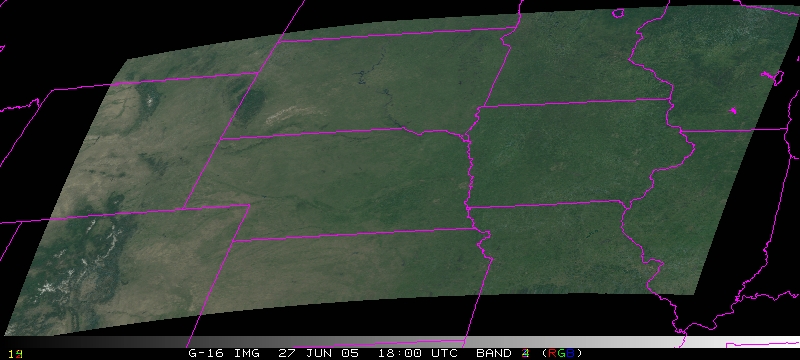Proving Ground: GOES-R ABI color imagery
J. Braun, Louie Grasso and Don Hillger
When GOES-R becomes operational, one new capability that no other GOES satellite has had to date is the ability to produce geostationary color imagery. As a result, satellite detection of pollution and/or thin smoke from wildfires can be detected (where they couldn’t in the past). GOES-R ABI will have the ability to produce imagery at 0.47 µm (blue) and at 0.67 µm (red). Although GOES-R will be unable to produce any images at 0.555 µm (green), color imagery can still be generated with certain techniques. These techniques can be tested through the use of synthetic GOES-R ABI imagery. Synthetic imagery refers to satellite imagery of numerical model output. One benefit of synthetic imagery is to aid in the preparation of GOES-R ABI data once the satellite becomes operational. Shown in Figure 1 is an example of synthetic GOES-R ABI color imagery over southern California for 23 October 2007. Likewise, a second example of synthetic GOES-R ABI color imagery over the upper high plains is displayed in Figure 2 for 27 June 2005. Both images have been enhanced using a procedure that is similar to the way NASA enhances MODIS imagery.

Figure 1: Synthetic GOESR-ABI color imagery over southern California for 23 October 2007.

Figure 2: Synthetic GOESR-ABI color imagery over the upper high plains for 27 June 2005.
